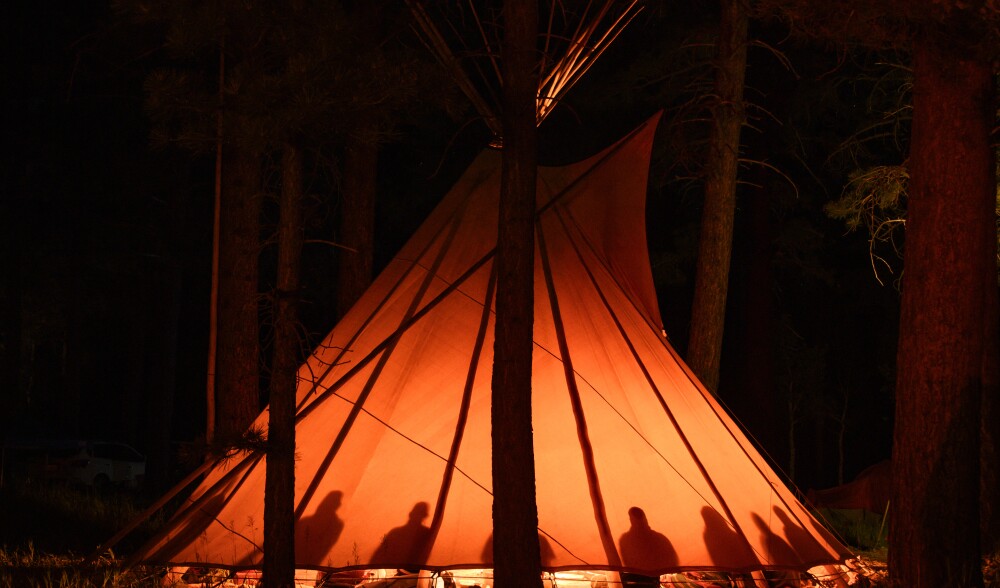In the Colorado River Basin, climate change is ushering in a hotter and drier reality that threatens the river's future and the water supply for 40 million people in the American West.
The Walton Family Foundation is working to find a pathway through water shortages to create stable and sustainable water supplies for people and for nature. Success requires collaboration and listening to communities like Native American tribes, who are on the front lines of many of these challenges.
Tribes have thousands of years of knowledge about water management in the Colorado River Basin. But they have historically been excluded from decisions around allocations and management of the river and water resources.
To better understand tribal needs and priorities, the foundation is actively listening to communities in the desert Southwest. Those efforts to listen have surfaced a critical but often overlooked need: ensuring universal access to water for tribal communities.
I spoke with Navajo Nation member Heather Tanana, who leads the Universal Access to Clean Water for Tribal Communities Project, about the water challenges and opportunities facing tribal nations.
What are some of the biggest water challenges facing tribal nations?
Heather Tanana: There are a lot of challenges that tribes are facing, but water in particular is one of the most critical issues that we have to address to ensure our continued survival. Water insecurity is pervasive across the United States, impacting tribes not just in the Colorado River Basin, but also in other areas as well. Water is so integral to our individual physical health, but also to our community health and to the environment. We have to ensure access to water for everyone. For our communities. For our individual health. And for the broader ecosystem as well.
What draws you to this work to ensure universal access to water for tribes?
Heather: Across many different tribal communities, there is a specific cultural value to water. Water is sacred. It informs our identity and the way that we interact, not with just one another, but also Mother Earth, Father Sky and our broader surroundings. My tribe, Navajo, and other tribes throughout the country all have their own way of saying that “water is life.”
My work on tribal water issues is very personally driven. I was born on the Navajo reservation. I observed and experienced firsthand the disparities that exist on tribal reservations. There is a lack of infrastructure, roads, cell phone access, water and access to food. There is a lack of opportunities for education and economic development. The Southwest – and what we call Diné Bikéyah – will always be my homeland. I have a responsibility to my community to give back and uplift where I'm able, to protect the people and the land I care about.
What does lack of universal access to water look like on the ground in tribal communities like the Navajo Nation?
Heather: An estimated 30-40% of Navajo residents do not have water coming into their homes. For Navajo, the biggest challenge is lack of infrastructure. Homes just don't have piped water coming in. So instead, these families have to haul their water. They have to drive out to a community water source. Sometimes these water sources may be coming from underground wells that are unregulated. So you're not sure about the water quality, but there's no other option. Sometimes that water source can be a half day’s drive away. It can take a full day to go 50 miles or more and load up water tanks. If you're Navajo, you very likely have someone in your family who is a water hauler.
Tribes have historically faced limitations in exercising their water rights. Where does that story start for you and how are you navigating it today?
Heather: Tribes, as sovereign nations, have very significant rights to water. In the Colorado River Basin alone, the recognized tribal water rights account for an average of 25% of the Colorado River's flow. And yet since the beginning of the law governing the river back in 1922, tribes have been excluded from the table when discussions are going on about water management. Why have tribes been excluded historically? That's a challenging question to answer in one sentence, but one of the elements I think is that the federal government, state governments didn't think that tribes would still be here.
What does tribal sovereignty mean to you? Why is it such an important starting point in understanding the dynamics of working with tribal nations?
Heather: Tribes are their own sovereigns. Native American people were here before the United States was established. The government entered into treaties with tribal nations formalizing that relationship and the rights and responsibilities that they would each have. In the Navajo Treaty, there was a promise for a permanent homeland for the tribal community. And integral to a permanent homeland is access to water. You can't have any sort of agricultural development or broader economic development without water. You can't have a homeland without water. The treaties created a federal responsibility to ensure that tribal communities have a sufficient water supply to turn on a faucet, cook, clean, feed their livestock and do the same things that the vast majority of Americans take for granted.
How is the Universal Access to Clean Water Project working to achieve that?
Heather: A big part of our work is to identify and help tribes access funding to provide universal water access in their communities. There are a lot of different federal programs that can fund tribal infrastructure projects. But they had never received sufficient funding to meet the needs of tribes across the country. With the Bipartisan Infrastructure Law, one of the biggest appropriations was to the Indian Health Service. There is now an unprecedented level of funding that can go to tribal water infrastructure projects. There is funding to actually address sanitation infrastructure deficiencies specific to Native American homes. That is a huge opportunity.
What do you see in terms of philanthropy's role, responsibility or opportunity working with tribal communities around water issues?
Heather: There's a big opportunity for philanthropic groups to not only partner and help tribes access funding and close the water gap, but also help them get a greater voice in the discussions about ensuring safe and secure water supply in the Colorado River. It's important to remember that tribes are dealing with so many different challenges, often without the same resources available to a state or other government. Philanthropy can help support tribes in building their capacity and gaining expertise so that they can engage on a government-to-government level on water issues with states and the federal government.
What gives you hope?
Heather: I have a lot of hope that we're going to close the water gap that tribal communities are facing. First, there is an increased recognition that many Native Americans still do not have clean, reliable water access, and that we should solve that problem. We've had some government leaders acknowledge that we don't need to resolve all the Colorado River’s management challenges before getting water to tribes. We can get all Americans clean, safe drinking water. That's an exciting thing.
This conversation has been edited for length and clarity.






